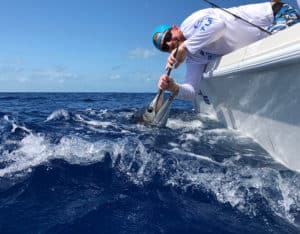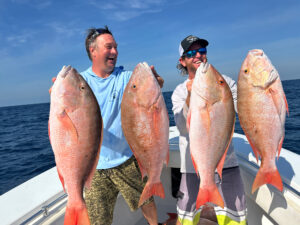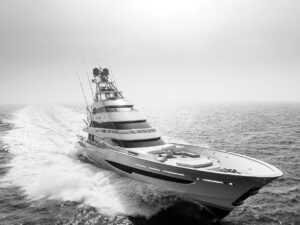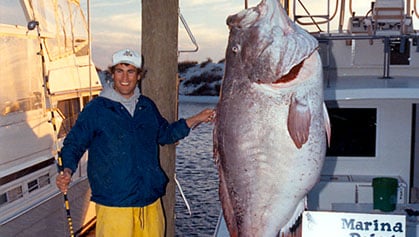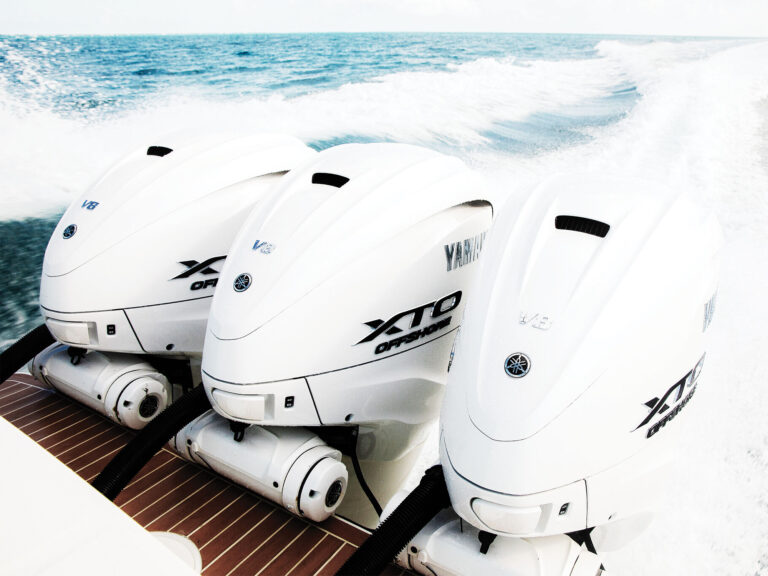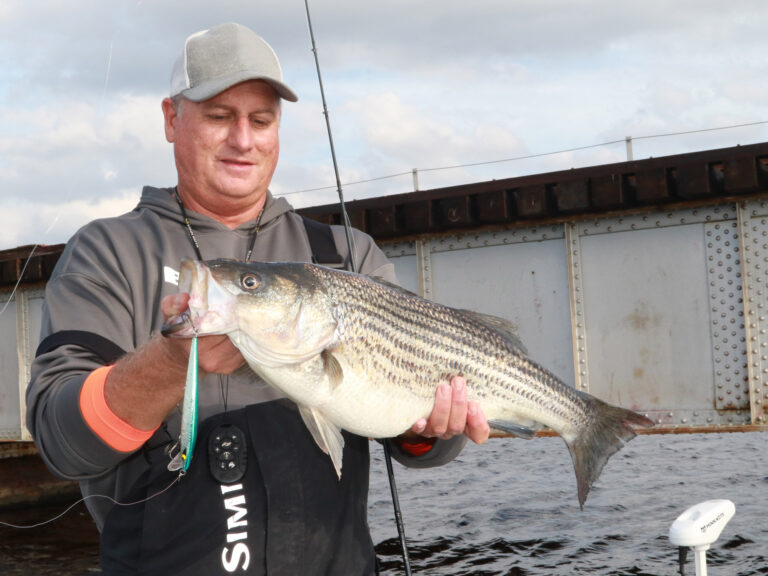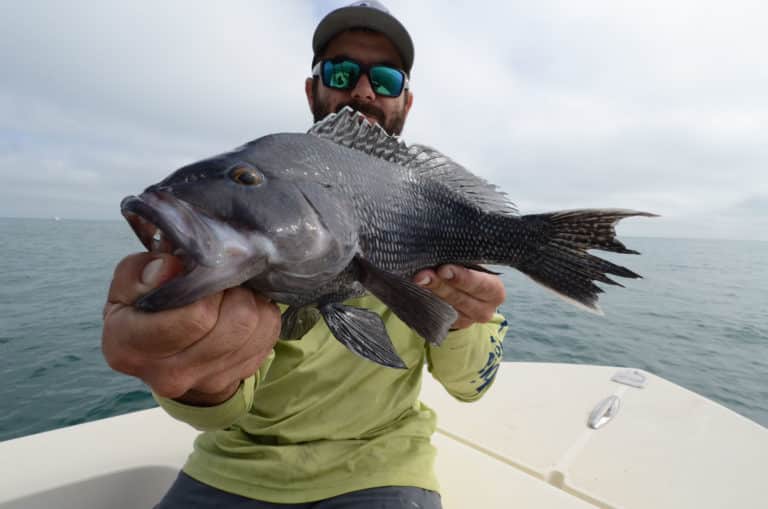
Is it possible to complete an inshore slam with just a single lure? Not any lure, but one that’s been used in mostly fresh water for decades? Years ago, that question crept into my young brain as I tossed spinnerbaits in a sawgrass-lined creek near my Florida home. With light braid and the weight of a blade or two, I cast it a mile, even if it did flail in the wind at times. Every once in awhile I’d catch a black-backed largemouth bass or bowfin, but even more often, greedy juvenile redfish or snook would ravage the bait.
My first thought was that I’d stumbled on a glitch in the fishing matrix, using a lure designed for one species to catch entirely different types of fish. Years later, I watched anglers in a Louisiana Bassmaster tournament release countless redfish while trying to target largemouths. That’s when I knew my spinnerbait experience wasn’t an outlier.

Saltwater Strong
Today, you don’t have to use bass-designed spinnerbaits for salt water; they’re such productive lures in the salty shallows that numerous manufacturers like Hildebrandt, Egret Baits, Aqua Dream, Z-man, Strike King and Slayer Inc. all produce beefed-up saltwater versions.
“Spinnerbaits are very effective in windy or cold-water situations,” says Bernie Schultz, pro bass angler and designer of the Drum Roller spinnerbait. “They can be fished laterally across shallow flats, or vertically through the water column in canals, creeks or along channel edges. The added vibration and flash help call fish from a distance.”

I spoke with different captains and tournament anglers in the Southeast to pinpoint the best conditions to utilize these baits. As I found out, an inshore slam in a single day is a definite possibility, and that includes seatrout, redfish, flounder and snook.
Spinnerbait Fishing for Redfish

Many freshwater spinnerbaits integrate wire molded directly into the head; that’s a weak point in salt water. To counter, most salty spinnerbaits use thicker-gauge wire and connect a clip to a jig-head eye. Still, all high-caliber saltwater spinnerbaits are designed to withstand large predators such as redfish. In fact, reds are probably the number-one inshore species targeted with spinnerbaits.

One captain who regularly catches bulls in Florida’s east-coast estuaries is Mike Hakala, based in New Smyrna Beach. Hakala’s Aqua Dream Living lures offer both a standard Cajun Slam spinnerbait and an in-line Strait Runner. These baits come in handy when all-too-regular winds blow out the shallow waters of Hakala’s Indian River Lagoon.
“A slow retrieve draws strikes when the water is dirty and visibility is poor,” he says. “I like the willow blade for its superior flash and the Colorado for its vibration.”
Before Hakala ever named his spinner-bait the Cajun Slam, he tested a prototype with Capt. C.A. Richardson in Louisiana. That day, he landed a redfish, trout, flounder and black drum in a single trip, so the name stuck. It also proved the feasibility of an inshore slam.

Spinnerbait Fishing for Flounder
Egret Baits pro staffer Brian “Freddy” Frederick recognizes just how versatile spinnerbaits are when he fishes tournaments in Texas and Louisiana, particularly in the Sabine Lake area.
“You can burn it along the surface or slow-roll it in waters to 20 feet along a jetty or deep channel,” says Frederick, utilizing bass-fishing lingo.

Besides redfish and speckled seatrout, Frederick specifically targets flounder with a spinnerbait when fishing in rocky areas. “One particular area I fish, near an industrial park, is shaped like a box; if I try to cast a lead-head jig, it’ll just get hung up,” he says. “But the flounder are in that area, so I’ll cast a spinnerbait, allowing it to flutter. I’ll let the bait reach the bottom, and I’ll jig on and off the bottom slowly; the flounder smash it.”
He casts a standard Colorado blade with an Egret Bait’s Wedgetail, preferring a medium-heavy Duce rod and Lew’s baitcaster. The bait does surprisingly well at not catching on structure. “Plus, it has flash as attraction, like a spoon, but also the vibration of soft plastic,” he says, “making it perfect for the dark waters I fish.”
Spinnerbait Fishing for Snook
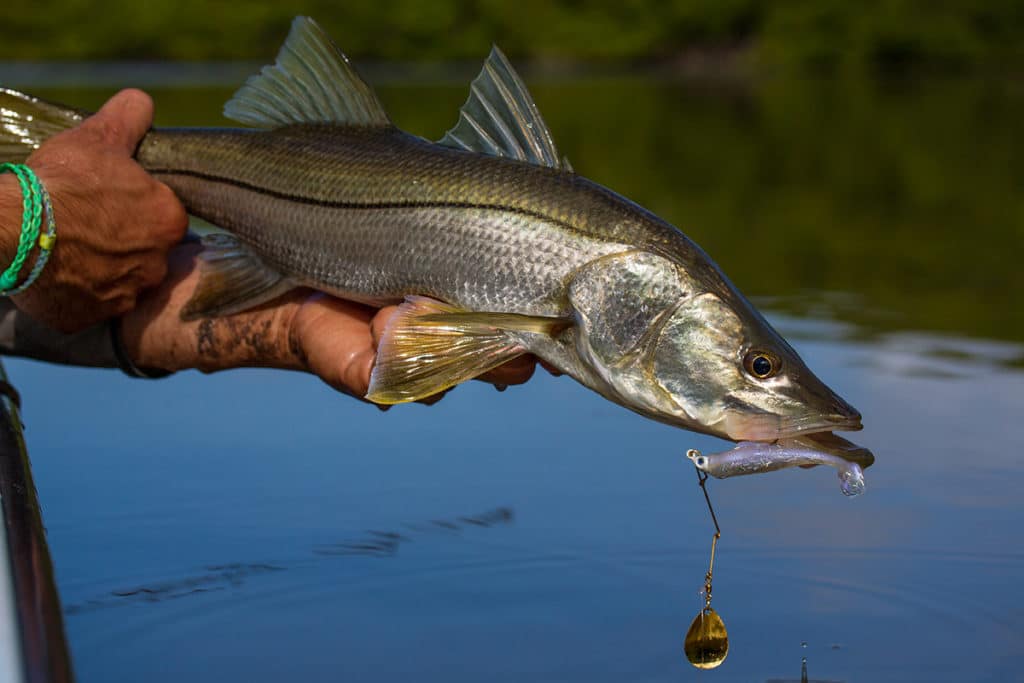
Capt. Greg Tunison doesn’t expect to catch snook when he throws spinnerbaits for redfish in southwest Florida’s Pine Island area, but when snook do hit, they cream the baits with killer strikes.
“If I left my other lures at home and were allowed only one spinnerbait to fish for snook in winter, it would be a white-skirt, single-gold, Colorado-blade bait,” he says. “I would fish a slow, straight retrieve along the bottom around bridges, large dock structures and deep, rocky canal edges at night.”
Spinnerbaits are great at catching redfish and flounder, but the vibrating bladed baits attract snook bites too.
“Add a trailer hook with a plastic curly tail for short strikes and more vibration at night,” he adds. “Make sure to use 60- to 80-pound fluorocarbon leader around heavy structure for serious snook and possible bonus tarpon.”
In the hot-water months, Tunison drops down to a 1/4- to 3/8-ounce bait with a single, gold willow blade and white Mylar skirt to cast along mangrove shorelines.
“Get into bass mode,” he says, “and use a baitcaster for the accuracy necessary to get back under the sticks.”
Spinnerbait Fishing for Seatrout

From late summer to November, high flood tides in Jacksonville and St. Augustine allow Capt. Tommy Derringer to sight-fish in expansive spartina-grass marshes. Perhaps surprisingly, Derringer often throws in-line spinnerbaits to catch reds, flounder and even seatrout.
“Baitfish and local marsh crabs are thick in the grass, so that’s what the in-line spinner is imitating,” says Derringer, a Slayer Inc. pro staffer. “It’s an easy bait to use; it’s incredibly weedless; and when fish hit it, they really thump it.”
When the tides aren’t as high, Derringer sticks to the spartina edges. Colorado blades throw more vibration than slender willow leafs — increasing drag and elevating in the water column — allowing ¼-ounce baits to run surprisingly shallow. Derringer garnishes his spinnerbait with a Sinister Swim Tail, opting for 20-pound baitcasting gear.
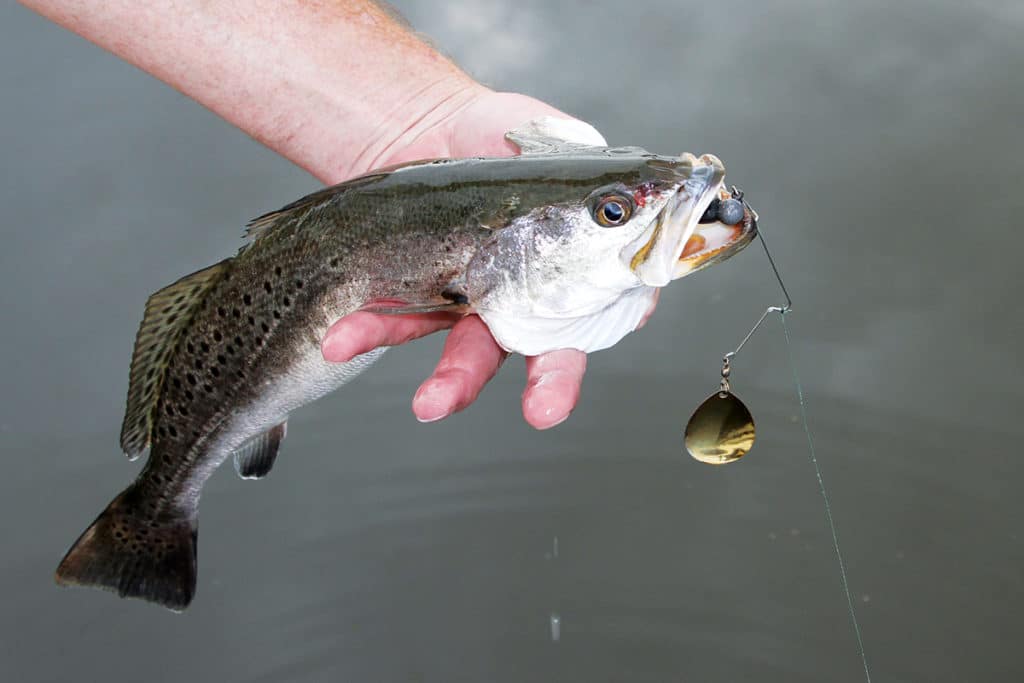
“On those not-so-high tides, cast a couple of feet into the grass and reel a steady retrieve back to the boat,” he says. “That’s when I catch a high number of seatrout. The R-bend spinnerbait with a jig head and open hook might hook fish a little easier, but I’ve never truly noticed a difference compared to in-line spinners.”
No matter what state the expert is from, I’ve noticed definite similarities among spinnerbait fishermen:
Baitcasting gear is a top choice because of its accuracy;
Salt anglers casting spinnerbaits are often bass fishermen too; and
Prime casting waters are those with mud bottoms or dark-colored water.
Inshore anglers can learn a thing or two from our bass bros.

